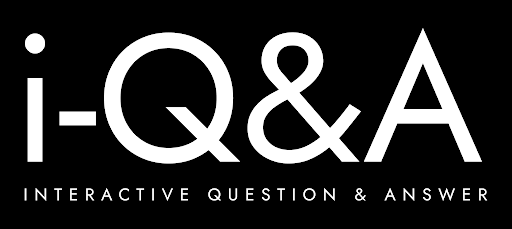
When was the last time you tried using your own FAQ page? Did it help—or leave you more confused?
A well-structured FAQ (Frequently Asked Questions) section can be a quiet powerhouse on your website. It doesn’t shout for attention, but when done correctly, it answers the questions your visitors care about most—before they even think about asking. Whether they’re curious customers, nervous prospects, or support-hungry users, a searchable FAQ can become a cornerstone of both sales and support.
At i-Q&A, we believe in giving people fast, accurate, and self-directed answers—and that starts with making those answers easy to find. This post will walk you through how to create a searchable, purposeful, and high-performing FAQ page that reflects your care for the customer experience.
What Is an FAQ Page (and Why Does Searchability Matter)?
An FAQ page is a dedicated section on your website where users can find answers to common questions. From explaining your refund policy to detailing how your product works, FAQs save your support team time and reduce friction in the user journey.
But there’s a catch: users only benefit if they can actually find what they’re looking for. That’s where searchability comes in.
If your FAQ isn’t searchable—or if it’s buried beneath poor headings, broken links, or cluttered copy—users may give up and contact your team anyway. Worse, they might leave altogether.
Build FAQs That Actually Help People
Creating a searchable FAQ isn’t about cramming keywords into a dusty list of questions. It’s about designing a page that works with your users, not against them. Let’s start with the essentials.
1. Include a Prominent, Fast Search Bar
At the heart of a searchable FAQ lies a robust, visible search bar. It should allow visitors to type a few words and quickly surface relevant questions and answers.
Don’t hide it halfway down the page. Place it at the top or in a sticky header if your FAQ spans multiple categories. Autocomplete functionality or predictive typing (think Google-style) can speed things up even further.
Why this matters: If your FAQ covers dozens of topics, nobody wants to scroll endlessly. A search bar trims the time from question to answer.
2. Structure Questions Using Real User Language
Go beyond internal guesswork. Mine your support tickets, chat transcripts, social media comments, and sales calls for real phrasing. People search using the words they’re familiar with—not your product team’s internal jargon.
Tip from i-Q&A: Keep your finger on the pulse. Review common queries monthly and update the FAQ to reflect what your users are really asking.
3. Use Headings and Categories to Guide Browsing
Not everyone searches. Some skim.
Organise your FAQ into clearly labelled categories to support visual browsing. For example:
- Getting Started
- Billing and Payments
- Product Features
- Troubleshooting
- Privacy and Security
Each section should have its own heading and a list of relevant questions below. Where needed, include subheadings to avoid overwhelming the reader.
4. Write Clear, Honest Answers
The goal isn’t to sell—it’s to help.
Write in plain English, get to the point, and anticipate follow-up questions. Where appropriate, link to longer articles, embed screenshots, or include short videos.
Avoid vague or evasive language. Transparency builds trust, even when the answer might not be what the reader hoped for.
5. Optimise for Search Engines Too
Your FAQ isn’t just helping current users—it can also bring new ones in through organic search.
Incorporate relevant keywords and search phrases naturally into your questions and answers. For example, instead of writing:
“What is your returns policy?”
Try:
“How do I return a product and get a refund from [Your Company Name]?”
This approach aligns your content with how people search—and helps your FAQ rank higher in search engine results pages (SERPs).
6. Use Smart Design Choices
Even the most helpful FAQ can feel overwhelming if it’s presented poorly. Use visual design to make it approachable:
- Accordion menus keep the page tidy
- Whitespace prevents information overload
- Icons can highlight important notes
- Branded colours keep it cohesive with your website
- Responsive design ensures readability on mobile and tablet
And always test it yourself. What feels obvious to you may feel buried to a new visitor.
A Real-World Example: Dripify
Dripify, a LinkedIn automation platform, demonstrates best-in-class FAQ execution. Their page is:
- Cleanly structured, with clickable questions and collapsible answers
- Built around action, supporting users at each step of the sales and onboarding journey
- Aligned with broader product strategy, allowing users to self-serve quickly
It’s not just about information—it’s about building confidence.
And Dripify isn’t alone. Brands like Airbnb, Pinterest, and Dropbox also offer inspiring examples. What they share is a common focus on clarity, structure, and user intent.
What’s the Difference Between an FAQ and a Knowledge Base?
This question comes up a lot, and it’s worth clarifying.
Feature | FAQ Page | Knowledge Base |
Focus | Most common questions | Full scope of product documentation |
Format | Short-form Q&A | Articles, guides, tutorials |
Ideal For | Quick reference | Deep learning or troubleshooting |
Structure | Flat or loosely grouped | Rich tagging and hierarchy |
Search | Basic to moderate | Advanced filters and indexing |
At i-Q&A, we recommend using both: FAQs for immediate queries and a knowledge base for more technical or detailed explanations.
Add Automation Tools for Smart Scaling
If your business is growing, keeping your FAQ up to date manually can become a burden. That’s where automation and smart search tools help.
🔧 Knowmax
- Imports questions from chat and support logs
- Suggests updates using AI
- Offers no-code templates and multilingual support
- Tracks performance so you know what’s working
🔍 ExpertRec
- Creates a custom FAQ search engine
- Shows result snippets directly in the interface
- Collapses/expands answers based on query relevance
- Integrates in minutes
These tools reduce maintenance time while improving user experience—especially helpful for ecommerce, SaaS, and service-led businesses.
Keep Your FAQ Alive
Think of your FAQ page as a living part of your website—not a one-off task.
Here’s how to keep it useful over time:
- Review it regularly: Has anything changed—pricing, policies, products?
- Track usage: Use tools like Hotjar or Google Analytics to see where people click, where they drop off, and what they search.
- Offer feedback tools: Let users vote on whether answers were helpful—or submit their own question if not.
- Cross-link smartly: Add links to FAQ answers in your product pages, checkout process, or onboarding emails.
Final Thought: Your FAQ Is Part of Your Voice
A searchable FAQ isn’t just a practical tool—it’s a reflection of how much you value your users’ time and autonomy.
At i-Q&A, we help businesses turn everyday touchpoints into meaningful interactions. A well-built FAQ supports that mission: it respects your users’ need for clarity, allows your team to focus on complex queries, and supports better outcomes across sales, support, and product engagement.
If you’re building—or overhauling—your FAQ section, start with this question:
Can someone land here, search once, and leave with confidence?
If not, it’s time to change that.
Want help improving your self-service experience? Visit i-Q&A to learn more about smart, human-first support solutions.
